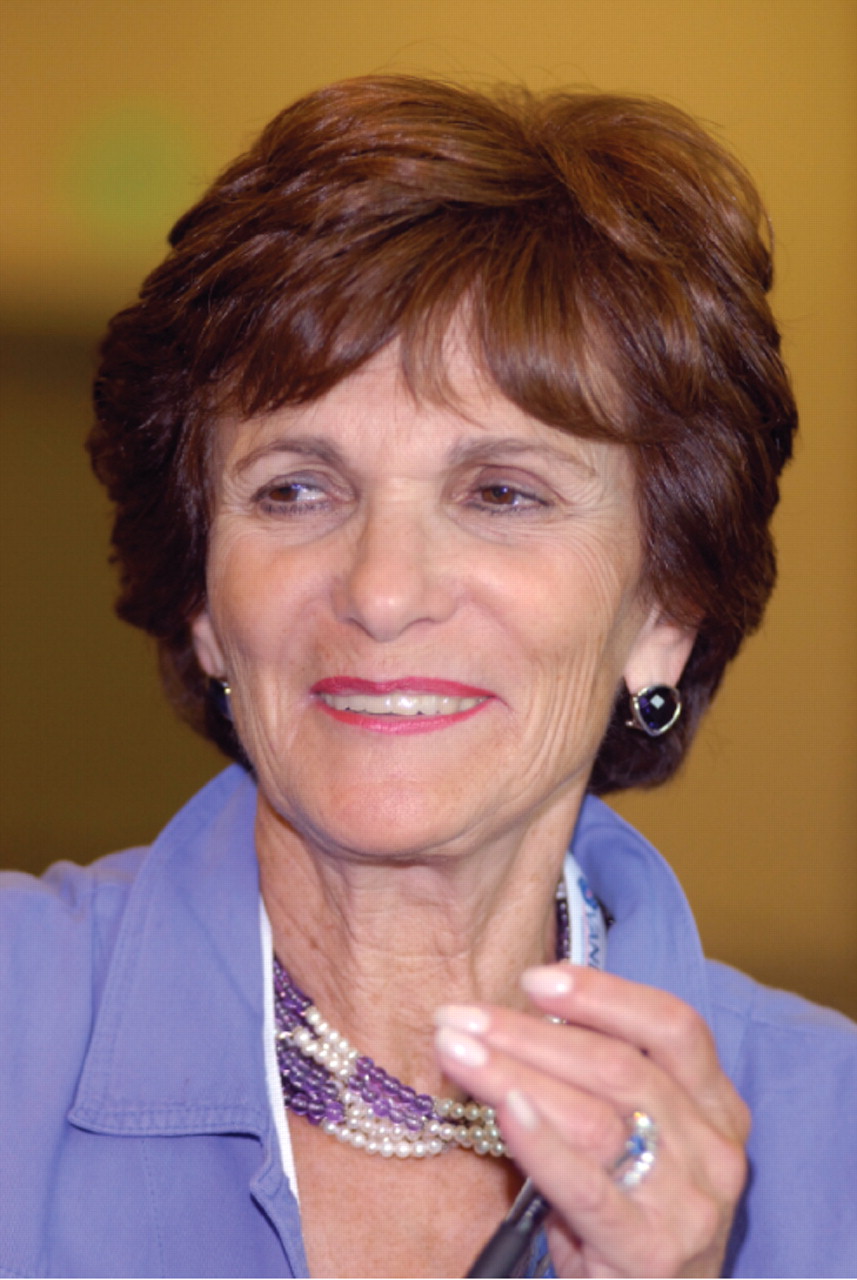Dukakis Grateful That ECT Was Her Anniversary Gift
Periodic treatment with electroconvulsive therapy (ECT) halts the downward spiral of her recurring depression, Kitty Dukakis said in an invited lecture at APA's 2007 annual meeting in San Diego in May.

Kitty Dukakis: “Patients should not have to suffer for months, and, in some cases, years, without ECT being an option.”
Credit: Ellen Dallager
The wife of former Massachusetts governor and 1988 Democratic presidential nominee Michael Dukakis, Kitty Dukakis said she had struggled with depression for about two decades before first receiving ECT in 2001.
Since then, she has had eight additional courses of ECT. She seeks treatment about every nine or 10 months, she said, when lethargy and sadness signal her depression's return. She received ECT most recently this past February.
Dukakis describes her experiences in a book, Shock: The Healing Power of Electroconvulsive Therapy, published this spring by Penguin Books. Her co-author, Larry Tye, a former medical writer for the Boston Globe, shared the podium with Dukakis at an APA meeting session that attracted about 800 attendees.
She was not diagnosed with depression until midlife, said Dukakis, now 69. From early adulthood onward, however, she had used alcohol to ease her blue moods. After her family removed liquor from the home, she consumed vanilla extract, nail-polish remover, hair spray, and, once, even rubbing alcohol, an act that led to her hospitalization in an intensive care unit and, afterward, in a psychiatric unit.
Dukakis has long talked openly about both her alcohol addiction and earlier reliance on amphetamine diet pills, her recurring bouts of depression, and the benefits of treatment. APA gave her its Patient Advocacy Award in 1989. Dukakis's earlier autobiographical book, Now You Know, co-authored with writer Jane Scovell, was published in 1990.
Physicians treating Dukakis for alcoholism and depression at Massachusetts General Hospital in Boston suggested ECT in the late 1990s, she said, but she and Michael Dukakis initially balked at this prospect.
Both held negative views of ECT, shaped not only by films such as“ One Flew Over the Cuckoo's Nest,” but also by the adverse experience of Michael's brother Stelian. After a suicide attempt in the 1950s, Stelian had received ECT accompanied by induction of an insulin coma, then a common practice. Following ECT, Dukakis said, “he was never really the same person.”
By 2001, however, with her depression worsening, Dukakis decided to try ECT. Her anxiety and fears of drinking were so high the night before her first treatment, she said, that she asked to be hospitalized.
She received that treatment the morning of June 20, 2001, her 38th wedding anniversary. On the way home a few hours later, she suggested to her husband that they go out to dinner that night. Her mood had lifted that quickly.
Dukakis now receives her care as an outpatient. A course of treatment consists of six sessions given Monday, Wednesday, and Friday for two weeks. Each session, start to finish, lasts about 30 minutes.
Dukakis was able to discontinue use of antidepressant medications a month after her first treatment, she said. She does not receive psychotherapy. Trained as a social worker, she now works as a volunteer aiding refugees and homeless individuals.
ECT's prime drawback, she said, is that it impairs her memory for events occurring approximately two weeks before and after treatment. She has not been able to recall visiting Paris with her husband a week before her first treatment, for example. On hearing this complaint, Michael told her,“ I'll take you back.” They returned to the same small hotel, hoping the setting would jog her memories. That did not happen. Indeed, Dukakis related, her sister, who had accompanied them, asked with dismay,“ How could you come back to this crummy place?”
“I hope that all psychiatrists will recognize that ECT is a safe and effective treatment for patients who are not helped with antidepressants and psychotherapy,” Dukakis told Psychiatric News. “Patients should not have to suffer for months, and, in some cases, years, without ECT being an option.”
According to Michael Dukakis, who added his perspective to his wife's talk,“ ECT literally has been a miracle in Kitty's life and our lives. Without this treatment,” he said, “Kitty might not be here today.”
In Shock, Dukakis and Tye write in alternate chapters. She narrates her experience, drawing on her medical and psychiatric records, while Tye chronicles the development of ECT and changes in its use over time. Tye reports findings from more than 50 interviews with ECT specialists and 100 interviews with patients who received ECT.
More than 100,000 people undergo ECT annually in the United States, Tye reported, with about 80 percent receiving it for depression.
Their book includes an extensive bibliography and an appendix with information for prospective ECT users including how to find a qualified practitioner, costs, and ways to prepare for memory loss. Dukakis and Tye also appear in an hour-long video based on the book.
A clip from the video, also called “Shock,” can be accessed at<www.shockdoc.tv>.▪



